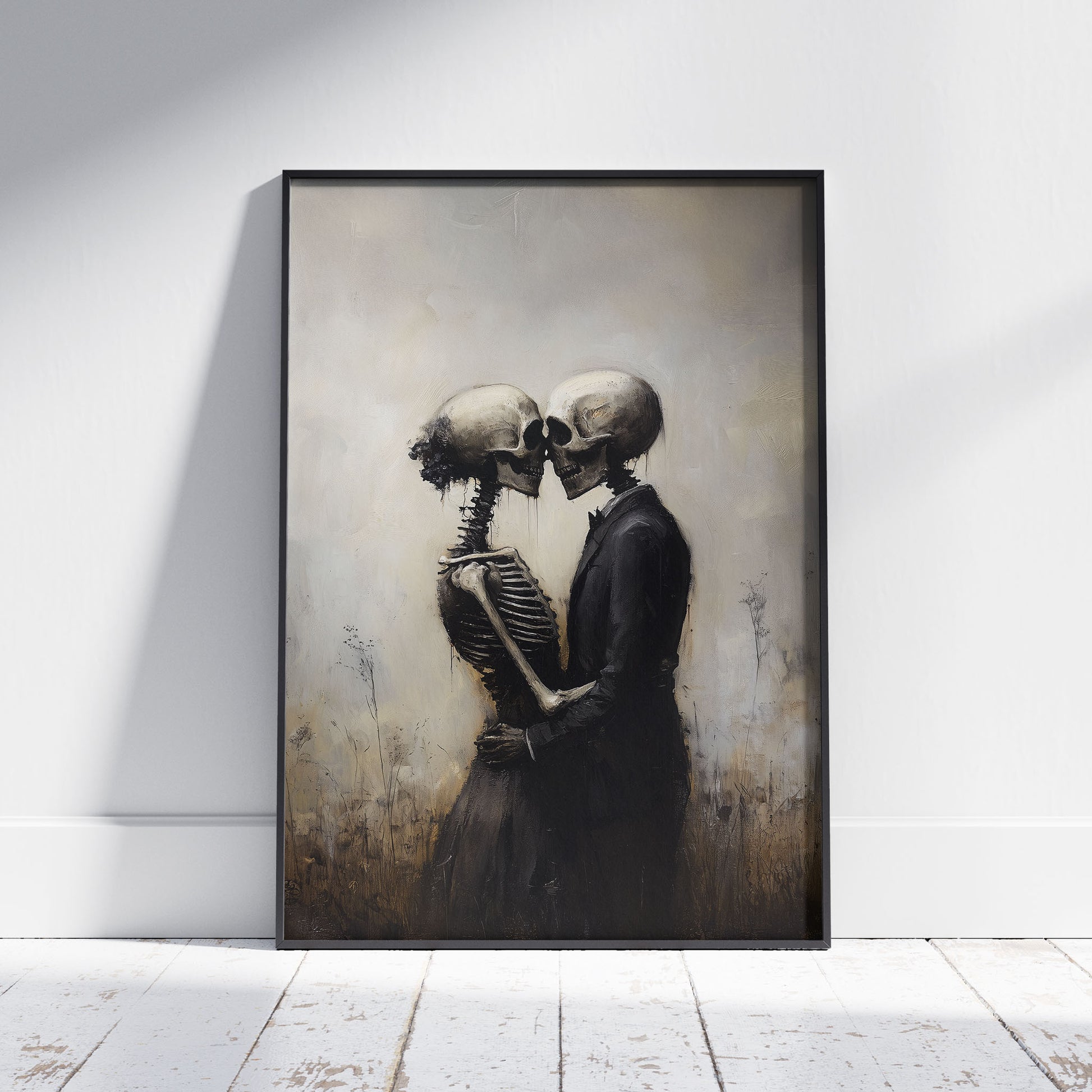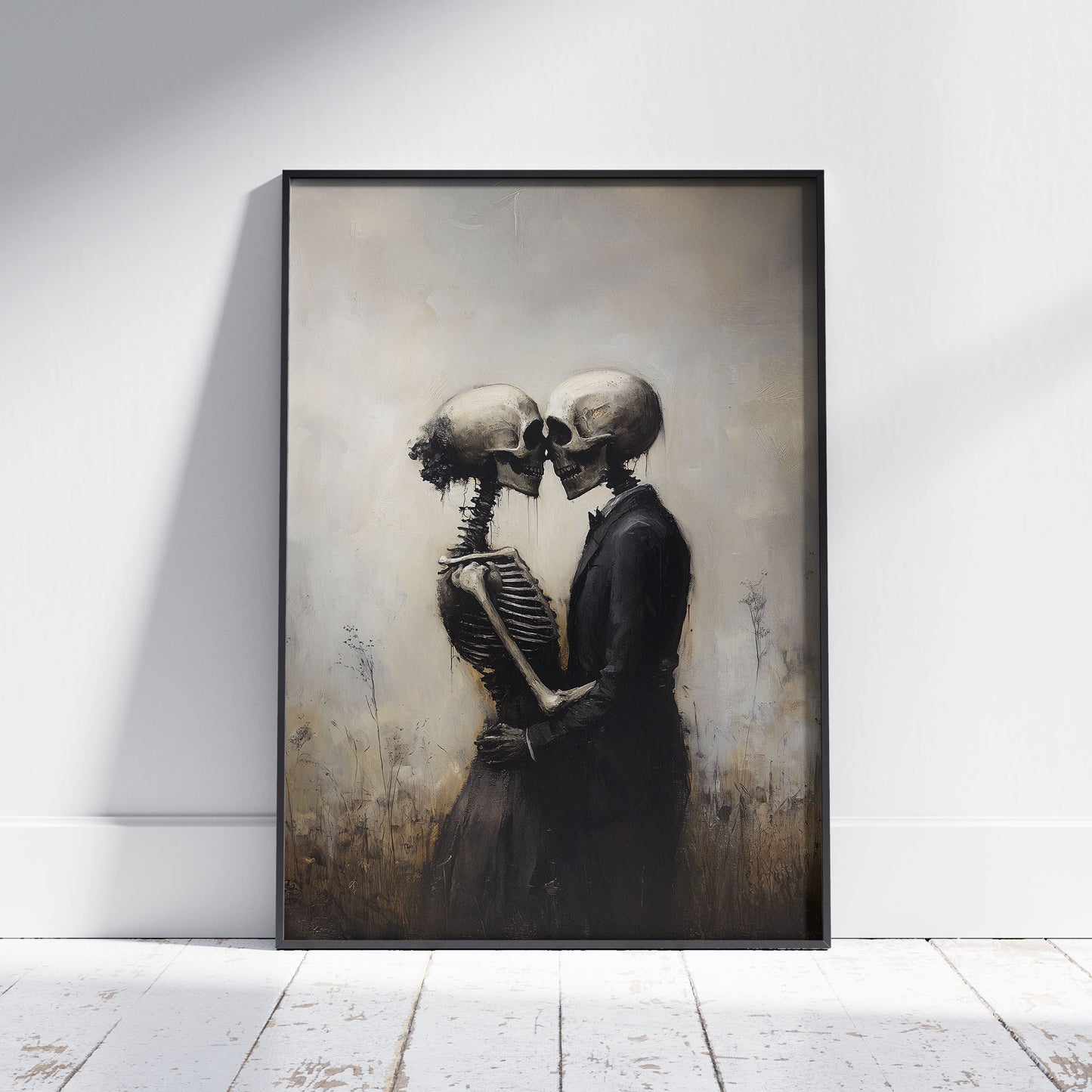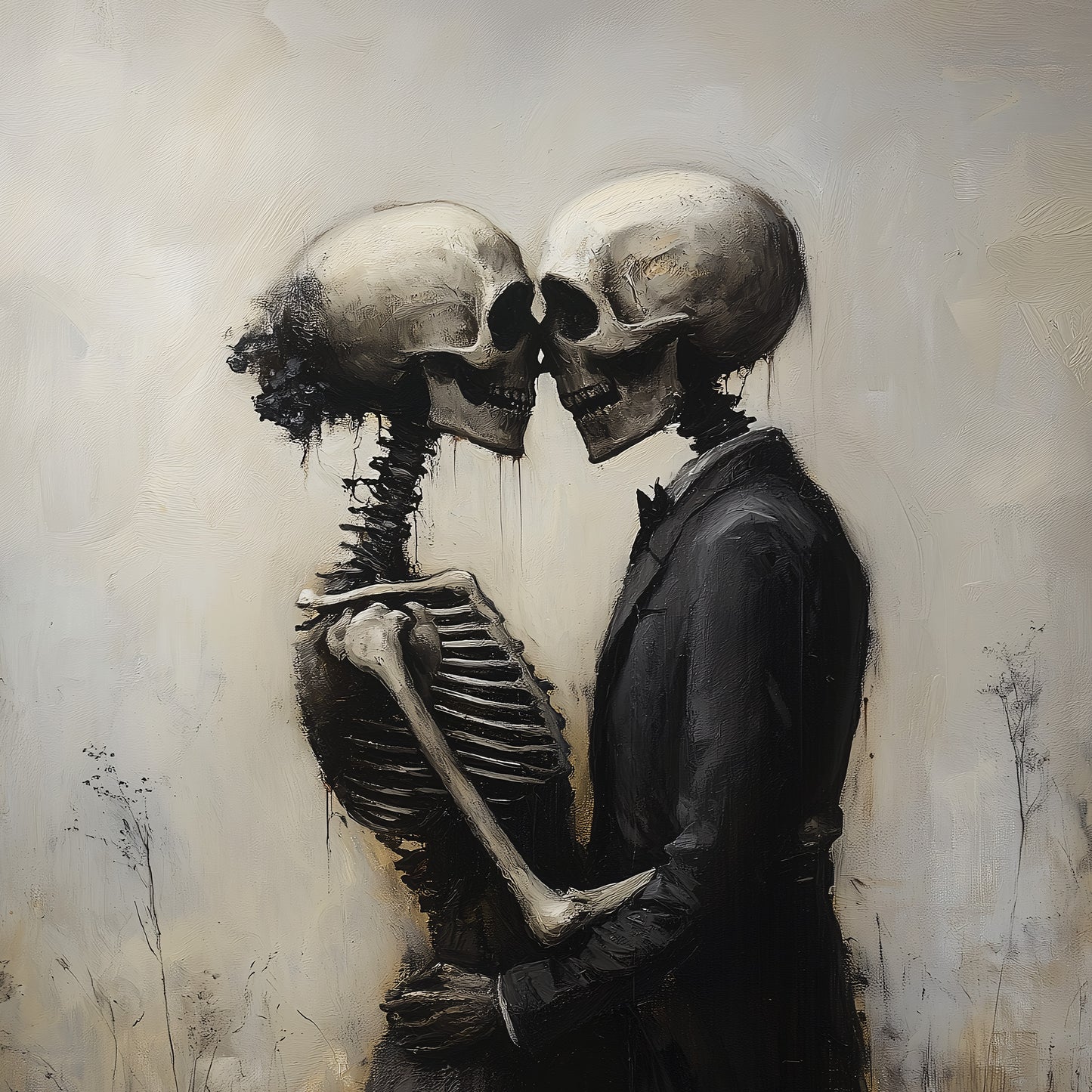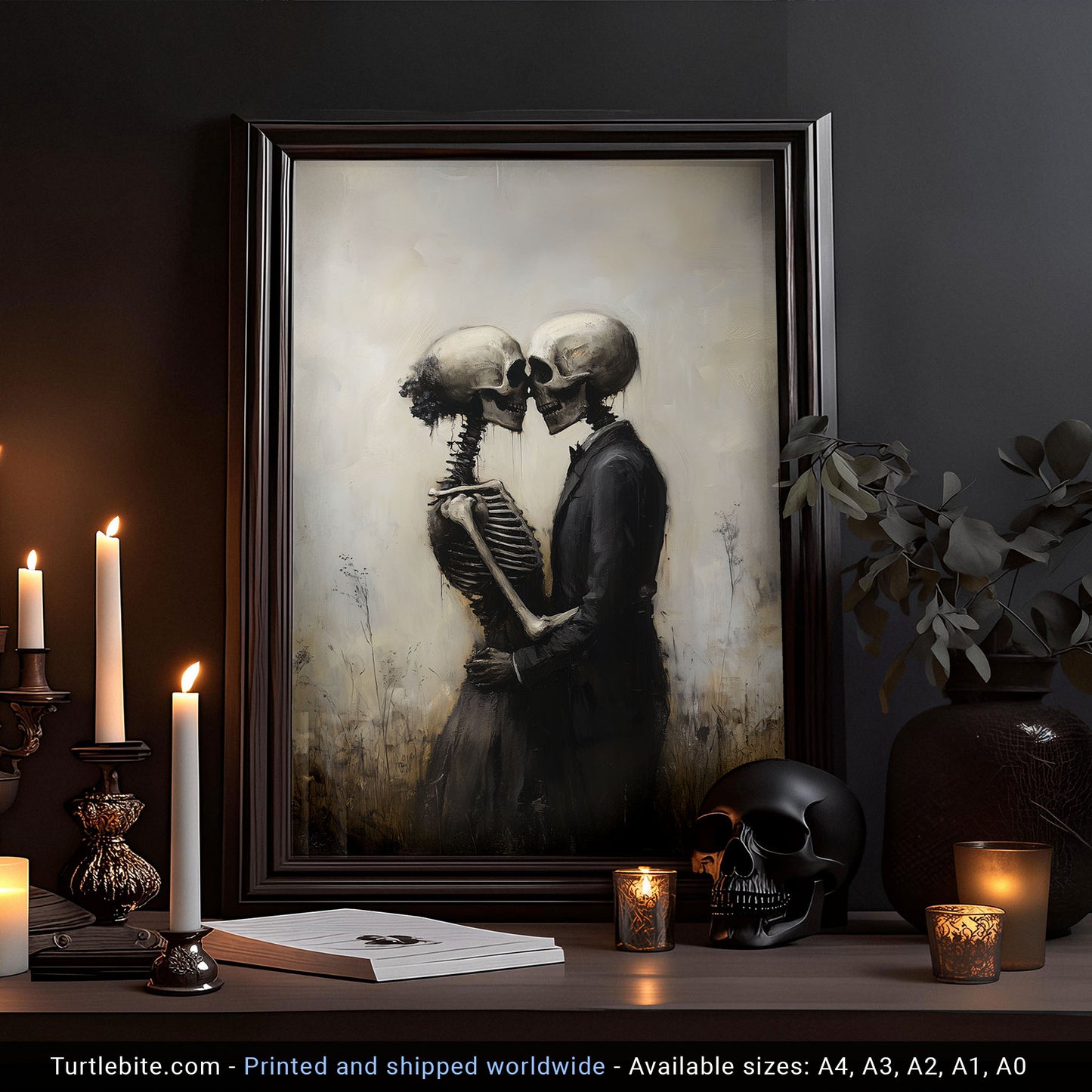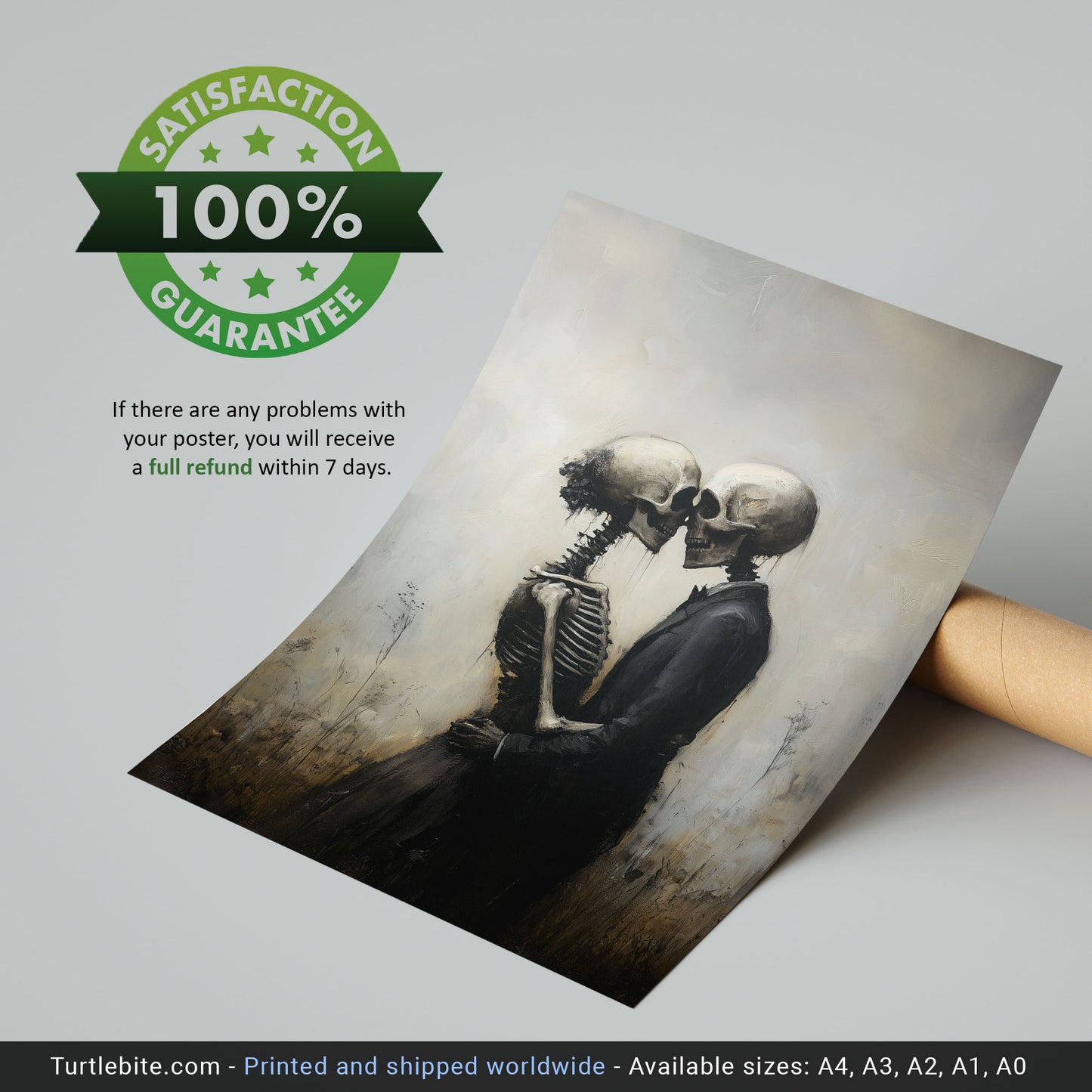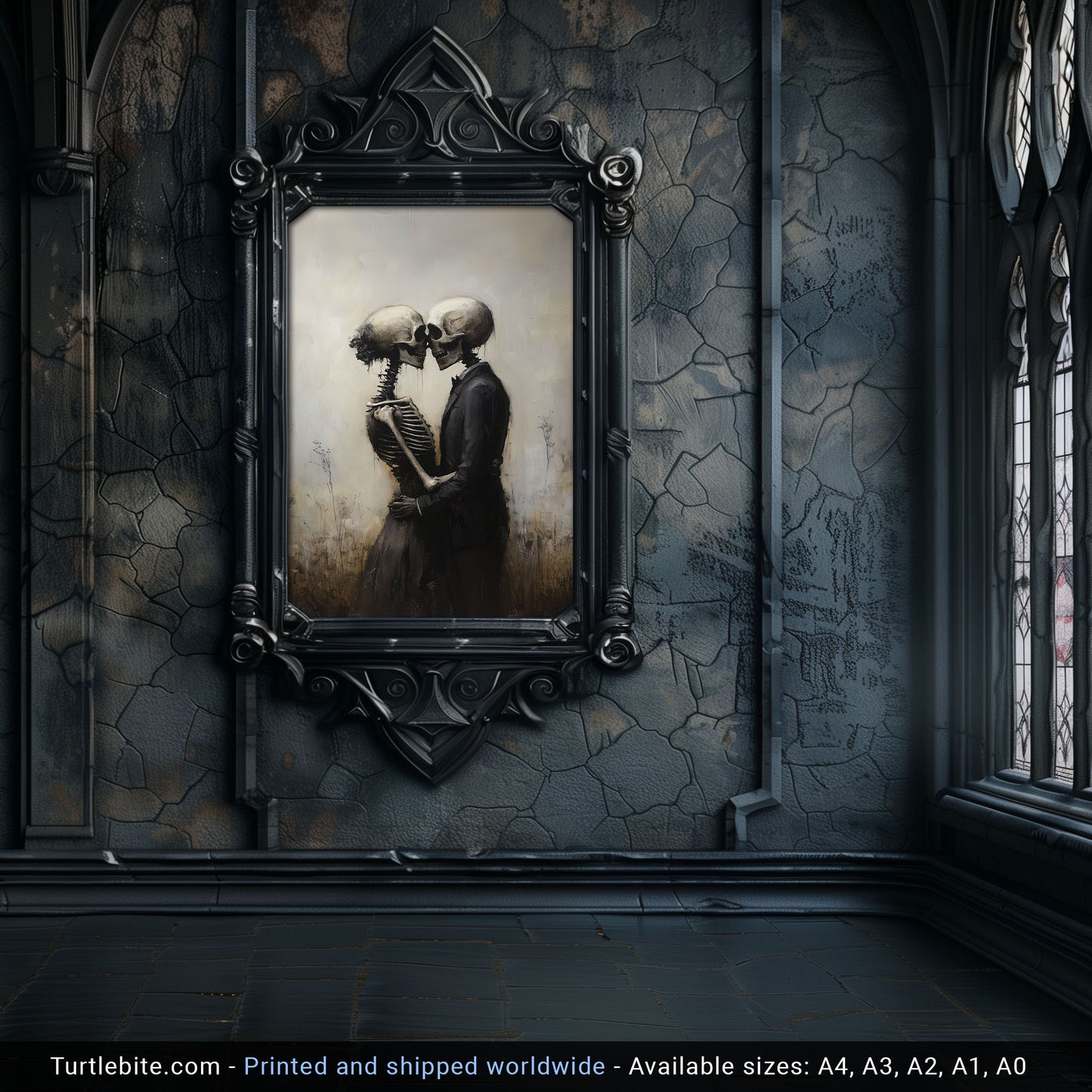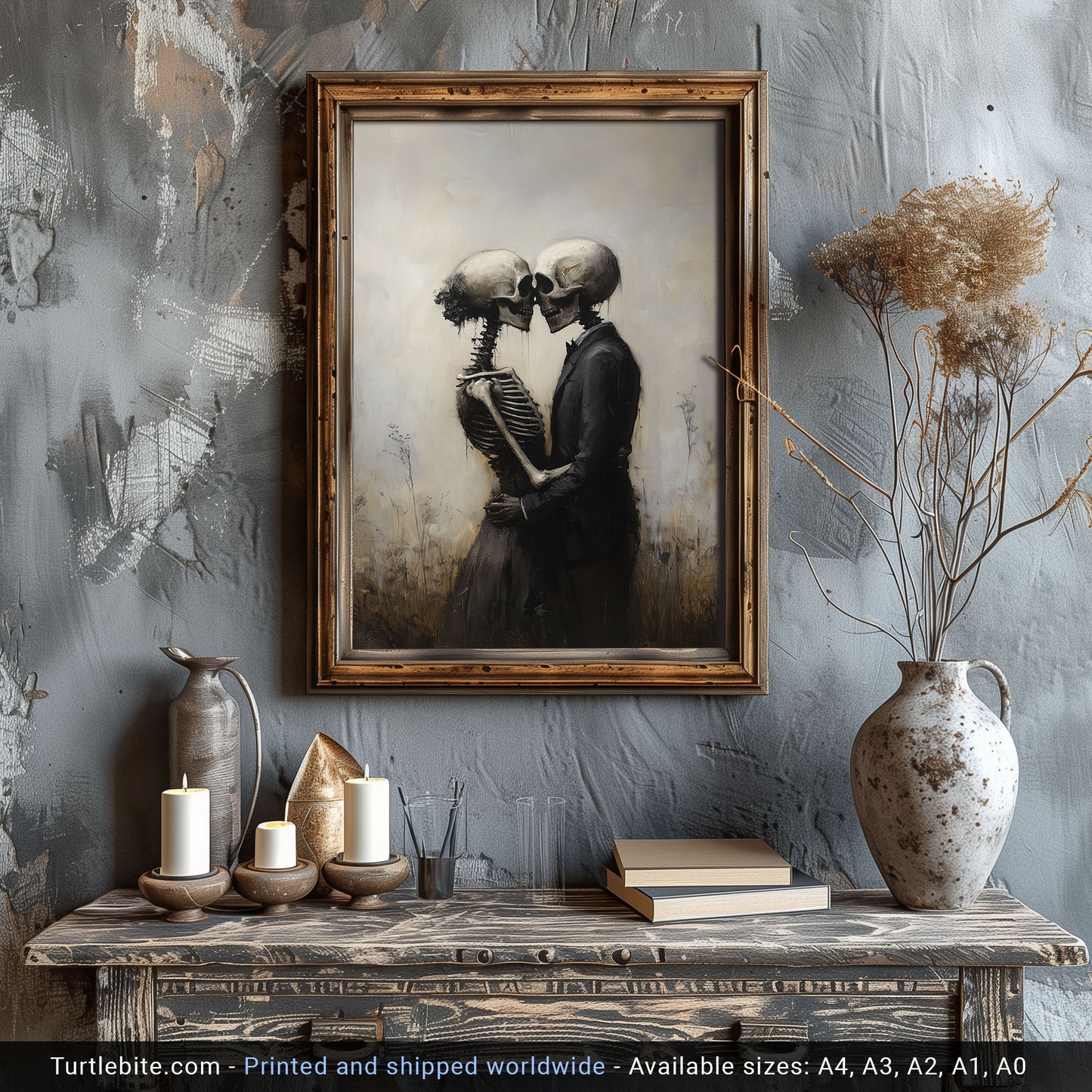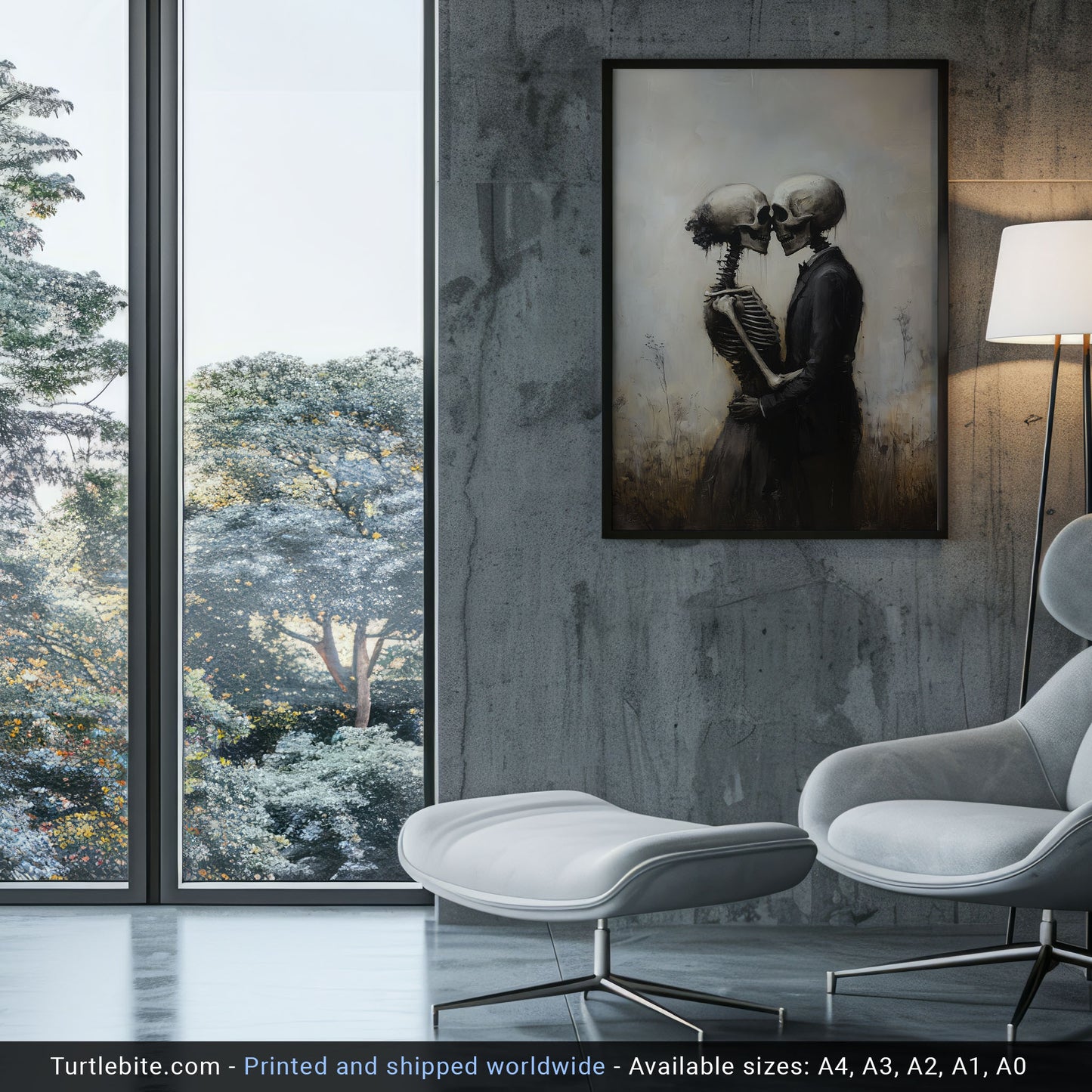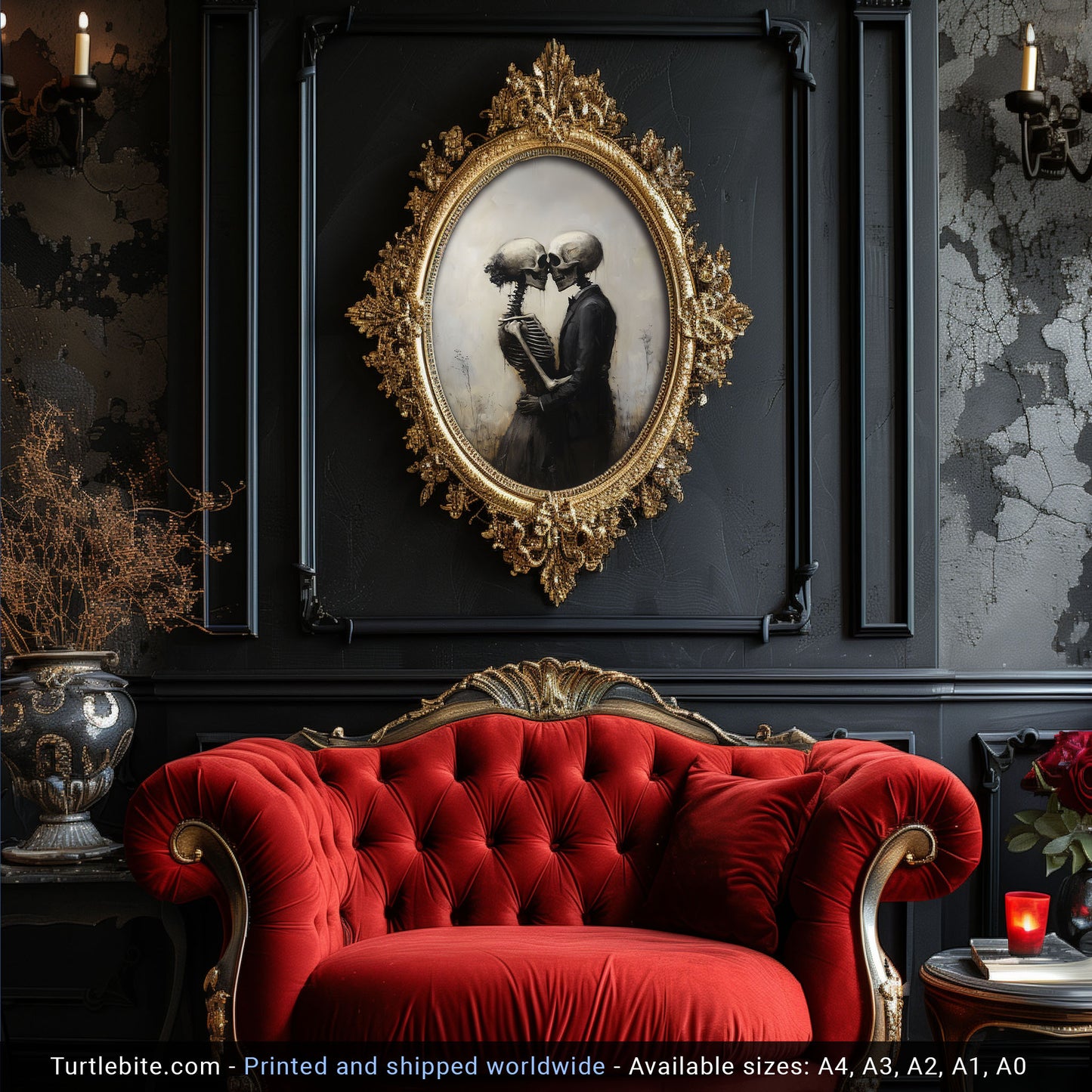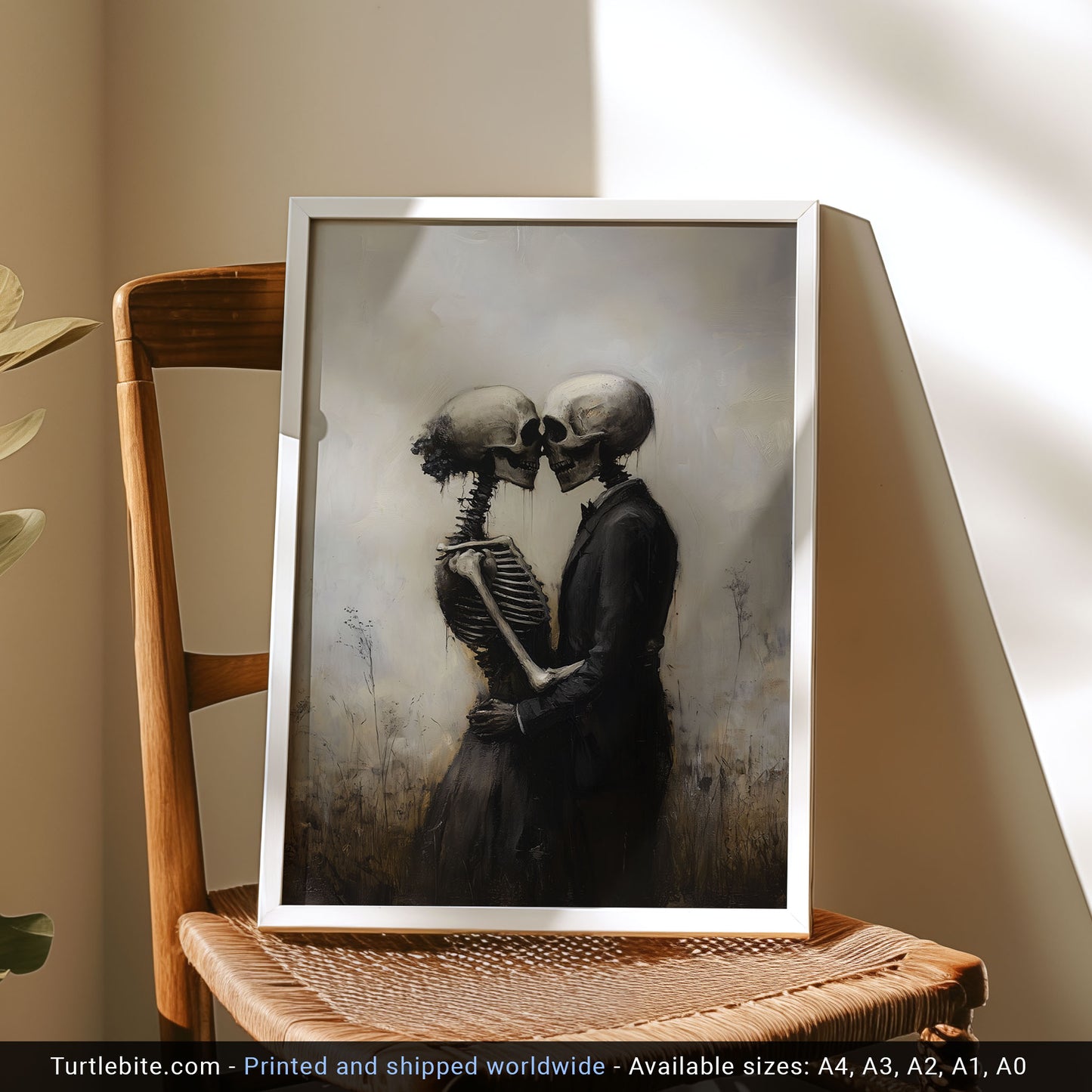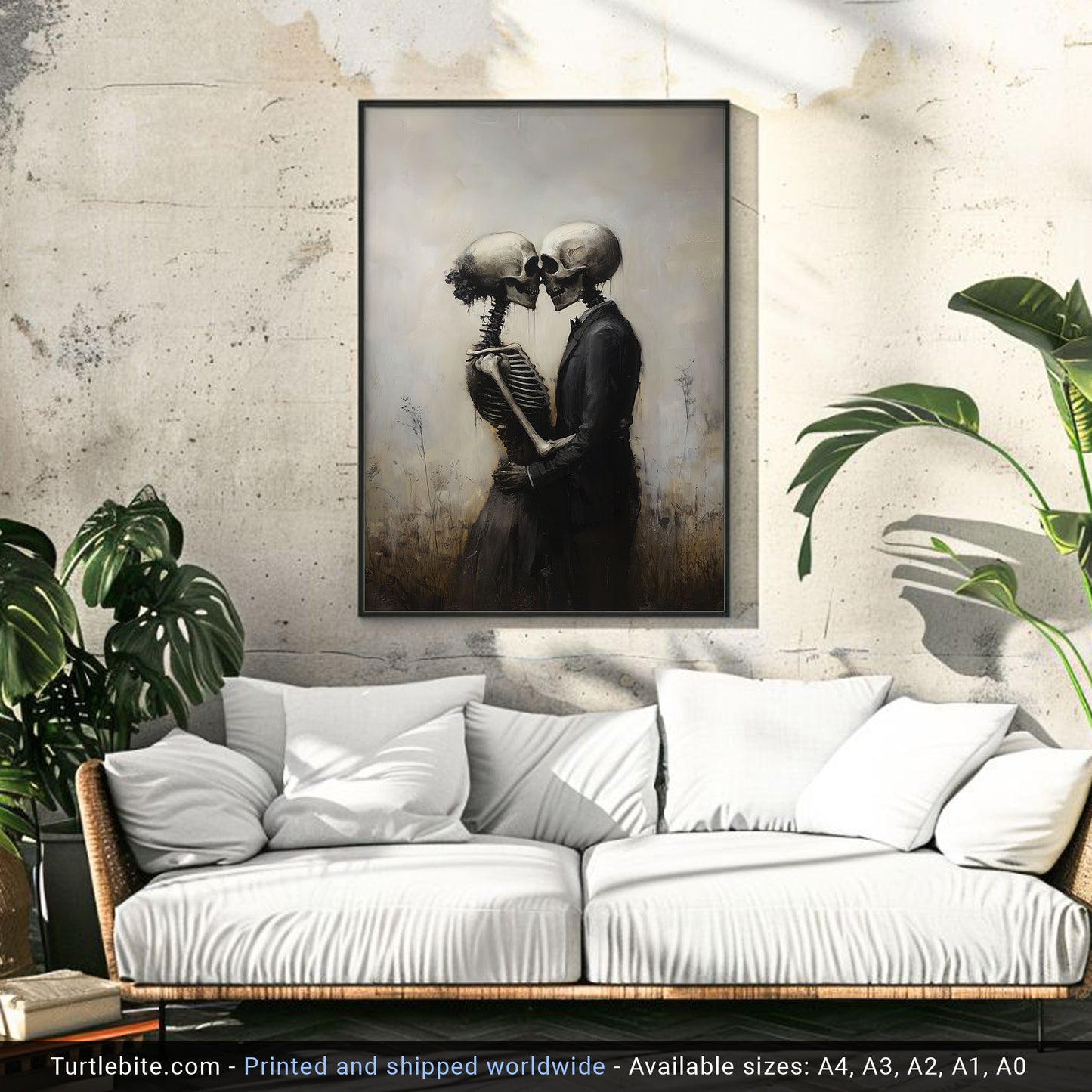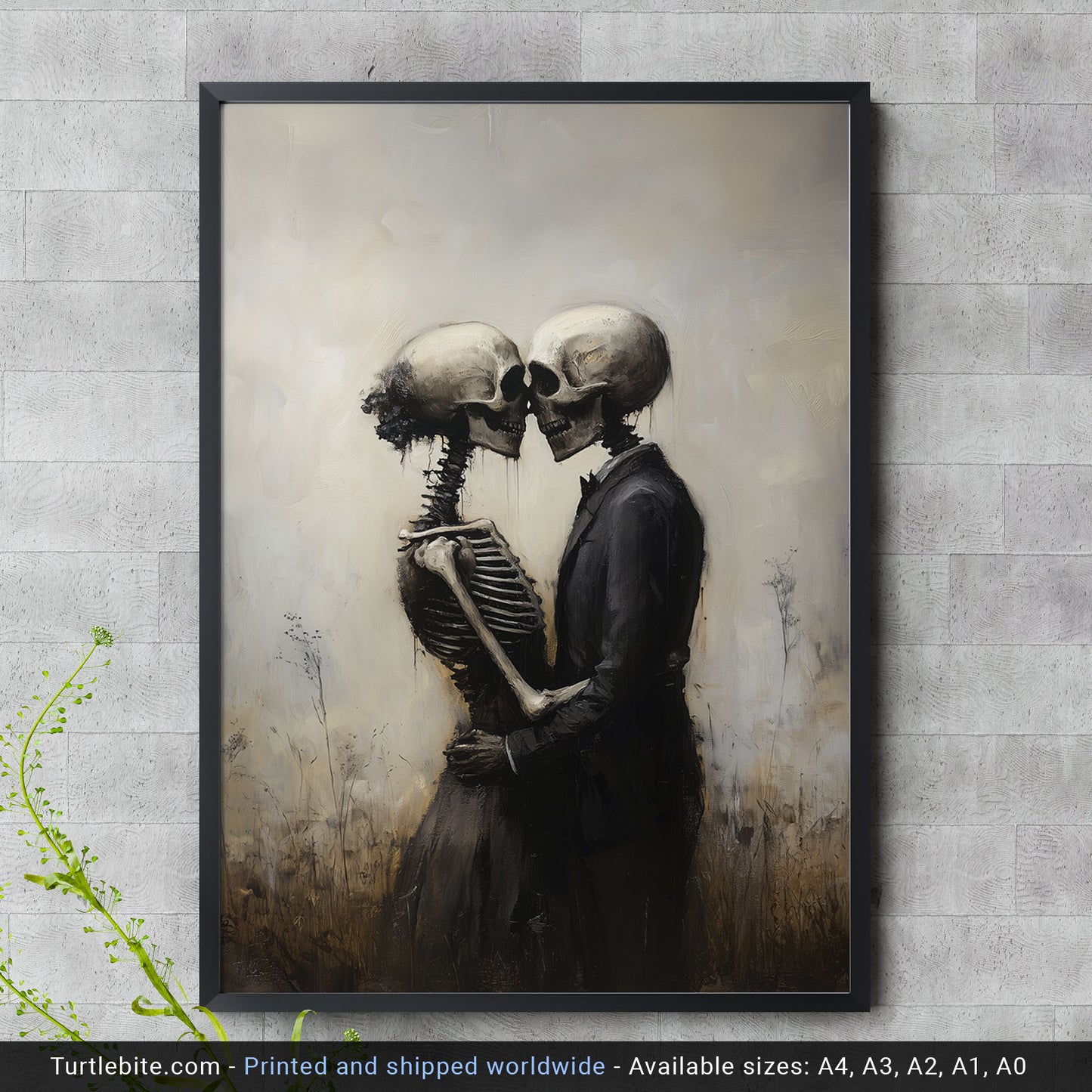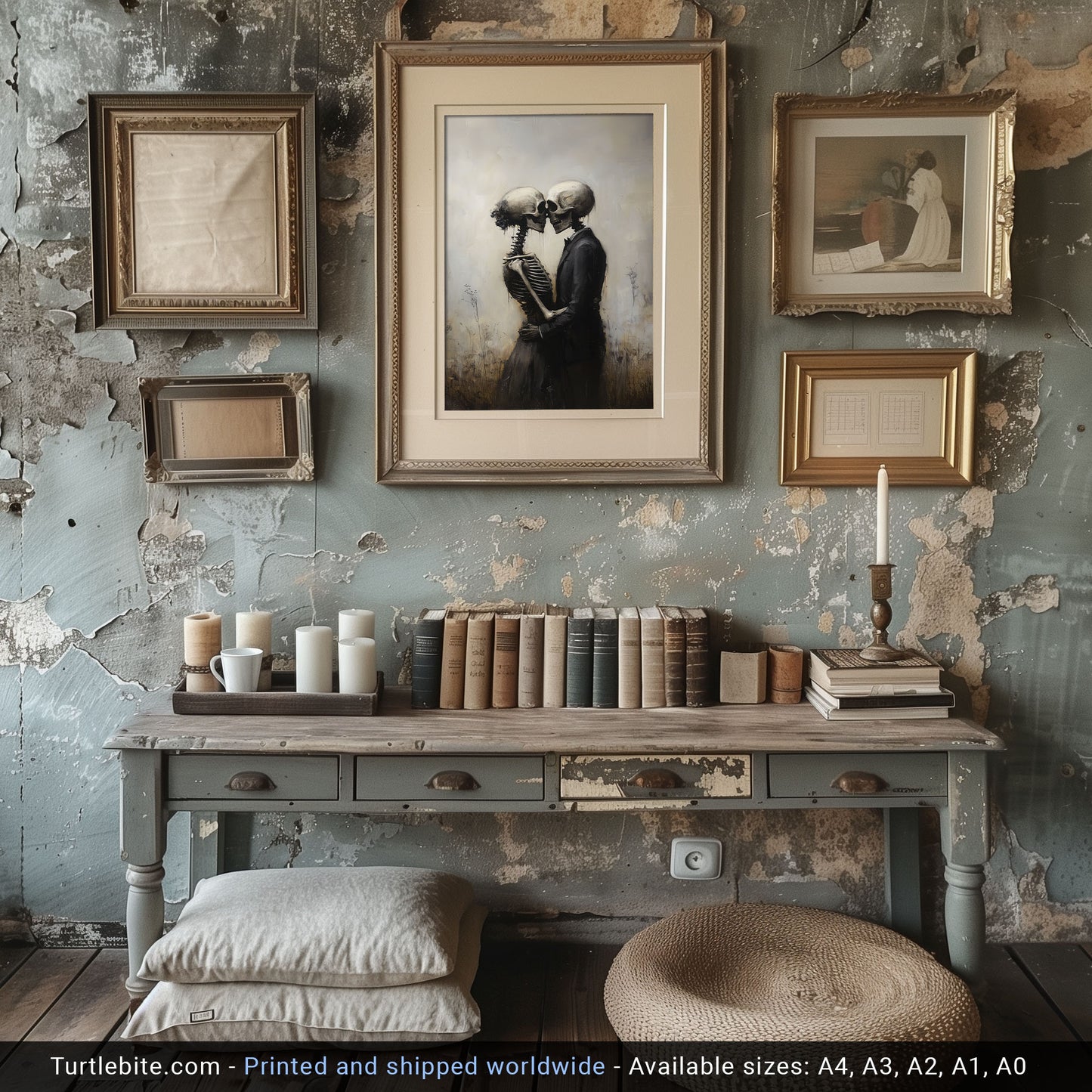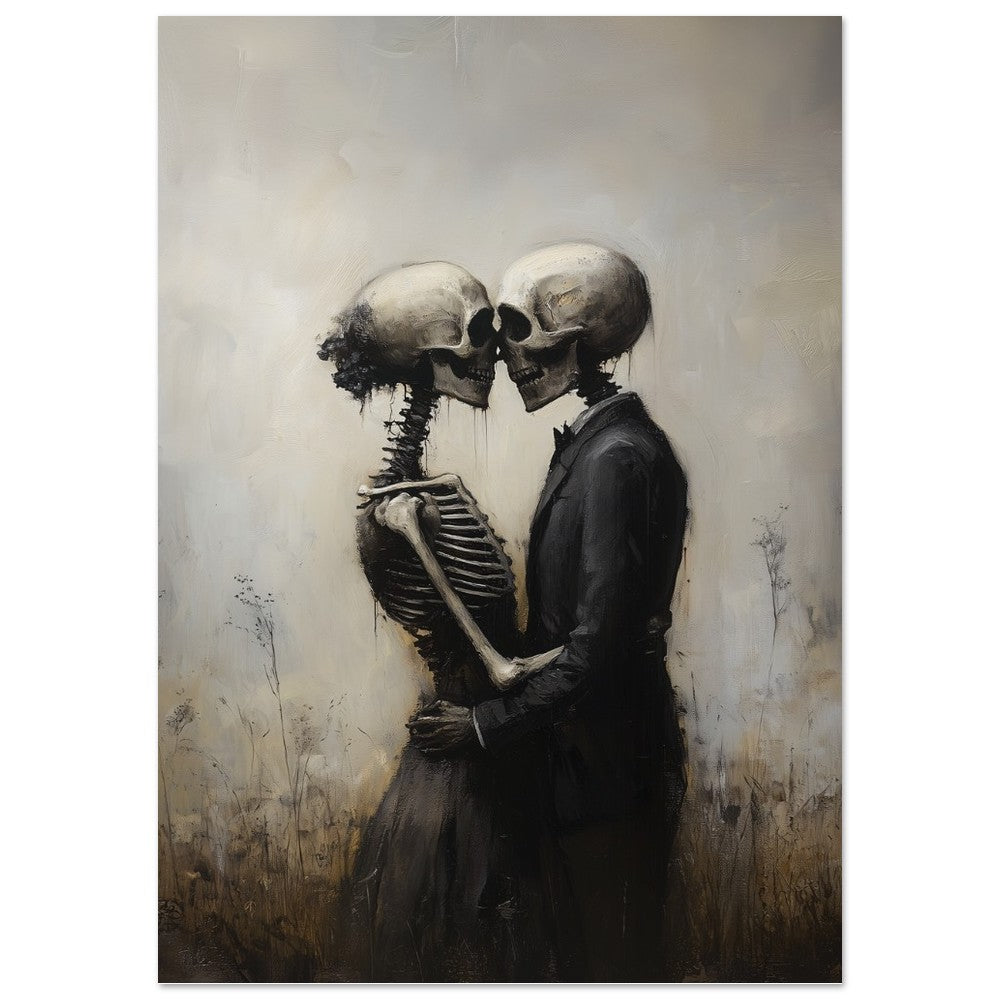
Understanding Gothic Symbolism: A Decoder Ring for Art Newbies
ChristianShare
Gothic wall art doesn't just look mysteriously cool hanging on your wall – every skull, raven, and twisted branch tells a story that's been evolving for nearly a thousand years. You know that feeling when you're staring at a Gothic piece and thinking, "This looks amazing, but what does it actually mean?" Well, you're about to become the person who can walk into any gallery and decode those dark, romantic symbols like you've got a secret decoder ring.
Gothic symbolism operates like a visual language that's been passed down through centuries, constantly evolving but never losing its core power to make us feel something deep and primal. The symbols you see in modern Gothic wall art today carry DNA from medieval cathedrals, Victorian mourning jewelry, and contemporary digital art movements. Understanding these symbols transforms you from someone who just "likes the aesthetic" to someone who genuinely gets what the artist was trying to communicate.
The medieval masters laid the foundation for everything
Medieval Gothic art (roughly 1120-1500) created the blueprint for virtually every Gothic symbol we recognize today. Gargoyles weren't just cool-looking monster heads – they served as functional water spouts that literally drained evil spirits away from sacred buildings. Think about that next time you see a gargoyle in modern Gothic wall art; it's not just decoration, it's a guardian watching over your space.

Pointed arches always draw your eyes upward, and that's completely intentional. Medieval architects designed these architectural elements to create spiritual aspiration, pulling your gaze toward heaven. Rose windows represented the "eye of God" and divine perfection, while stained glass transformed ordinary sunlight into something otherworldly and sacred.
The cross dominated medieval Gothic symbolism as the ultimate representation of Christian faith and triumph over death. But here's where it gets interesting – even non-religious people today connect with Gothic crosses because they represent something deeper than doctrine. They symbolize the intersection of earthly and divine, the meeting point where human struggle meets transcendent meaning.
Medieval artists embedded skulls into their work not to be morbid, but to remind viewers of "memento mori" – remember you must die. This wasn't meant to depress people; it was supposed to inspire them to live virtuously and appreciate life's precious moments. Pretty profound philosophy for something that looks so metal, right?
Victorian goths changed everything (and we're still obsessed)
The Victorian Gothic Revival (19th century) took medieval symbols and gave them a romantic, sometimes rebellious twist. Roses evolved from simple religious symbols into complex representations of beauty, decay, and the bittersweet nature of love. Victorian artists especially loved wilting flowers because they captured the era's fascination with beautiful death and tragic romance.

Ravens became literary superstars thanks to Edgar Allan Poe's famous poem, transforming from battlefield scavengers into mysterious messengers between worlds. Victorian Gothic wall art often featured these birds as symbols of wisdom, prophecy, and connection to the supernatural. Bats similarly evolved from demonic associations to represent transformation and the ability to navigate through darkness.
The Victorians also popularized ivy as a Gothic symbol, representing eternal life and the persistence of memory. You'll see ivy crawling across Gothic artwork because it symbolizes how life continues even after death, how beauty can emerge from decay. This period gave us the template for modern Gothic romance – dark, beautiful, and tinged with melancholy.
Twisted trees became major Victorian Gothic symbols, representing the soul's journey through hardship and the wisdom gained from surviving life's storms. These gnarled, dramatic trees appear frequently in contemporary Gothic wall art because they capture something essential about resilience and finding beauty in struggle.
Modern gothic art speaks your language
Contemporary Gothic artists have taken traditional symbols and infused them with modern psychological insights. Skulls in modern Gothic wall art might represent transformation and personal growth rather than religious mortality. Black roses have become symbols of rebellion against conventional beauty standards, while moon phases represent cycles of change and feminine power.
Digital age Gothic art has democratized these symbols, making them accessible to anyone who connects with themes of darkness, transformation, and finding beauty in unconventional places. Modern Gothic wall art often combines traditional elements like crosses and roses with contemporary design aesthetics, creating pieces that feel both timeless and totally current.

Ankhs (Egyptian crosses) have become popular in modern Gothic symbolism, representing eternal life and mysticism. Pentagrams appear frequently, symbolizing protection and the five elements, though their meaning shifts dramatically depending on context and orientation. Modern Gothic artists often use these symbols to express spiritual rebellion or connection to alternative belief systems.
The pentagram illustrates how symbol meanings evolve – traditionally representing protection and divine balance, it now carries various meanings from Wiccan spirituality to occult symbolism. Understanding these shifts helps you interpret contemporary Gothic art more accurately.
Cracking the code: practical symbol interpretation
Want to decode Gothic wall art like a pro? Start with the color palette. Blue traditionally represents divine truth and the Virgin Mary, while red symbolizes passion, blood, and sacrifice. Gold indicates divine light and precious offerings, black suggests mystery and the unknown, and white represents purity and resurrection.
Architectural elements in Gothic art always carry meaning. Flying buttresses represent divine support and the balance between opposing forces. Spires symbolize spiritual aspiration and reaching toward heaven. Stained glass effects transform ordinary light into something sacred and otherworldly.
Nature symbols operate on multiple levels. Thorns represent both Christ's passion and the protective barriers between sacred and profane. Wilting flowers symbolize life's transience and the beauty found in decay. Moonlight creates mystery and suggests transformation, while twisted trees represent endurance through hardship.
When you're looking at Gothic wall art, pay attention to symbol combinations. A skull with roses might represent finding beauty in mortality, while a raven perched on a cross could symbolize divine messages or prophecy. The relationship between symbols often matters more than individual meanings.

Famous works that showcase gothic mastery
Chartres Cathedral remains the ultimate Gothic symbol decoder because it contains virtually every important Gothic element. The rose windows create divine light effects, gargoyles protect the building while draining water, and the cruciform floor plan allows visitors to literally enter Christ's sacrifice.
Pre-Raphaelite paintings like Millais' "Ophelia" show how Victorian artists used Gothic symbols to explore themes of tragic beauty and lost innocence. The specific flowers in Ophelia's death scene each carry symbolic meaning – pansies for thoughts, daisies for innocence, and wilted blooms for mortality.
Contemporary artists like Alexander McQueen brought Gothic aesthetics into mainstream fashion and art, proving these symbols remain relevant for expressing modern anxieties and desires. His work shows how Gothic symbols can address contemporary issues while maintaining their timeless emotional power.
Tim Burton's aesthetic demonstrates how Gothic symbols translate into popular culture, making them accessible to audiences who might never visit a medieval cathedral. His stark contrasts and skeletal figures update traditional memento mori themes for modern sensibilities.
Modern gothic wall art trends you need to know
2025 Gothic decor trends emphasize sophisticated darkness over traditional "spooky" associations. Botanical gothic combines dark florals with mystical elements, while celestial gothic incorporates moon phases and star imagery. Vintage typography connects contemporary pieces to Gothic literary traditions.
Digital gothic artists create hyperrealistic works that blend traditional symbols with contemporary techniques. Photo manipulation and digital painting allow artists to explore Gothic themes with unprecedented detail and emotional depth. Social media platforms have made these works more accessible than ever.
Gothic wall art now includes everything from minimalist skull prints to elaborate botanical illustrations with dark themes. The key is understanding how traditional symbols translate into modern contexts while maintaining their core emotional resonance.
Your gothic symbol decoder is ready
IMO, understanding Gothic symbolism transforms how you experience art :) You'll never look at a Gothic piece the same way again – every element becomes a clue in an ongoing conversation between artist and viewer that's been happening for centuries. Whether you're choosing Gothic wall art for your home or just appreciating pieces in galleries, you now have the tools to decode the rich symbolic language that makes Gothic art so enduringly powerful.
The beauty of Gothic symbolism lies in its ability to evolve while maintaining core themes of mortality, spirituality, and finding beauty in darkness. These symbols speak to something fundamental in human experience – our need to confront difficult truths while still finding meaning and beauty in existence. That's why Gothic art remains relevant across centuries, constantly adapting to new contexts while preserving its essential power to move and transform us.
Gothic symbols don't just decorate walls; they invite contemplation, spark conversations, and connect us to centuries of human artistic expression. Now you're ready to join that conversation with confidence and genuine understanding. FYI, once you start seeing these symbols everywhere, you'll wonder how you ever missed them before.

